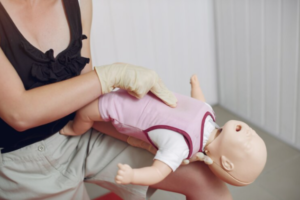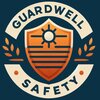Learn vital advice and tactics for protecting baby hazards at home. This comprehensive guide covers every aspect of creating a safe and secure environment for your child, from baby-proofing to avoiding common baby hazards.
Introduction
A baby’s arrival into your home is a happy and transformative occasion. But it’s important to know about the several concerns that could endanger the safety of your baby. This in-depth manual will explore the fundamentals of preventing baby hazards and provide helpful advice and efficient tactics to protect your child.
The Initial Line of Protection
Stair Safety: Installing safety gates and fastening handrails to staircases are crucial measures in preventing falls.
Kitchen and bathroom safety tips include using appliance locks and properly storing sharp objects and dangerous materials. Maintain a controlled water temperature in restrooms to avoid burns, and store cleaning products and medications securely.
Furniture Safety: To avoid accidents caused by tipping, heavy furniture should be secured to the wall.
Sleep Safety: There is a considerable danger of SIDS (Sudden Infant Death Syndrome). Never share a bed with your infant; instead, put them to sleep in a cot or bassinet on their back.
Prevent chokes by keeping small items out of reach, such as jewelry, batteries, and some foods.

Safety Gear
Install smoke and carbon monoxide detectors in each bedroom and room, and make sure they are periodically tested.
Baby gates: Make sure your safety gates are strong and simple to use to keep children out of hazardous locations.
Safety of Harness and Strap: Make sure your child is safely strapped in and securely positioned in highchairs and strollers by using a 5-point harness.
Safety Tips for Crawling and Walking: Use safety gates, seal up spaces between banisters, and keep low furniture away from windows as soon as your baby begins to crawl or walk.
Fall Prevention: To prevent falls, use nightlights, clear clutter off the floor, and repair stair railings.
Educational Resources: It’s important to grasp the fundamentals of caring for a newborn, including handling, feeding, and changing diapers.
Vaccination Information: Keep yourself updated on the vaccines your child needs to prevent certain illnesses.
Advanced Baby-Proofing Techniques
Take into consideration these cutting-edge baby-proofing methods to further improve your child’s safety:
Window and balcony safety: To prevent falls, install window guards and limit opening. If gaps are large, balconies should be covered with safety netting.
TV and furniture straps: Fasten all hefty TVs and furniture to keep them from toppling over. This is particularly crucial as your child starts to pull himself up and climb.
Cord management: To avoid strangulation threats, keep all cords, especially those from electrical appliances and blinds, out of reach.
Establishing a Secure Sleeping Space
The right crib setup complies with current safety regulations; use a crib made after June 2011. Make sure there are no toys, bumpers, or loose blankets in the crib.
Sleepwear: Avoid using loose blankets and instead use appropriate-weight sleepwear like a wearable blanket or sleep sack.

Safety in the Kitchen: Installing a stove guard will help shield burn victims from hot surfaces. Use refrigerator locks to keep your kids away from potentially dangerous things.
Bathroom Safety: To stop people from slipping and falling, place non-slip mats on bathroom floors and in bathtubs. Installing toilet locks can help guard against unsupervised access and drowning concerns.
Outdoor Safety: Play places outside should be gated and kept clear of any potential risks, such as swimming pools or gardening tools.
Sun Protection: To shield your infant from damaging UV rays, use hats and sunscreen that is appropriate for children.
Emergency Readiness
First Aid Kit: Learn basic first aid and CPR, and keep your first aid kit well-stocked.
Emergency Contacts: Keep a list of emergency contacts close at hand, such as the pediatrician and poison control.
Child Safety Classes: Take advantage of the child safety courses that your neighborhood hospitals or community centers are offering.
Internet Resources: For the most recent information on baby safety, consult reliable websites.
Improving Home Security
To guarantee thorough baby danger prevention, particular focus should be placed on less evident but no less significant sections of the house:
Pet safety: Although animals make fantastic friends, it’s crucial to watch over how your infant interacts with them. Make sure pet food is kept out of reach as it poses a choking hazard.
Plant Safety: If consumed, some common household plants can be harmful. Store these plants high or take into consideration getting rid of them from your house.
Electric Outlet Safety: To stop your infant from sticking anything into electrical sockets, cover the outlets.
Toy safety: Check toys frequently for broken or loose parts that could be choking baby hazards. Make sure the toys are safe for children’s age groups and don’t include any hazardous materials.
Encouraging a Secure Educational Setting
It’s critical to have a space that is secure and supportive of learning and discovery as your baby develops and starts to explore. Select educational toys that promote growth and are safe, including puzzles, novels, and building blocks, for your child.
Safe Exploration Spaces: Assign particular rooms in your house for your baby’s safe exploration; make sure these spaces are clear of dangers and filled with educational materials.
The digital era of today provides new ways to ensure newborn safety:
Baby monitors: To keep an eye on your child when you’re not in the same room, use an audio or video baby monitor.
Safety Apps: There are a number of apps that can track your baby’s growth, remind you to check on certain safety measures in your home, and offer advice on baby safety.
Parenting Groups: Participating in local or online parenting groups can be a wonderful way to get support and exchange knowledge on baby safety.
Frequent Pediatric Visits: Take advantage of routine pediatric examinations to talk about any worries you have about your child’s safety and to seek expert guidance.
Keeping Up with Safety Recalls: Sign up for alert services or visit safety websites frequently to stay informed about product safety recalls, particularly those involving toys and gear for babies.
Conclusion
Keeping your child safe from harm is a lifelong commitment that changes as they become older. It calls for a combination of alertness, knowledge, and flexibility. You can establish a loving atmosphere that supports your kid’s health and development by adopting an all-encompassing approach to newborn safety. a will give you peace of mind and let you cherish the special moments of parenthood. Never forget that your child’s safety comes first, and the work you do now will set the path for a safe and happy future for your child.
Making sure your infant is safe is a complex process that changes as they get older. It is possible to build a secure refuge that supports your child’s growth and discovery at home if you remain aware, put these thorough safety precautions into practice, and regularly evaluate the situation.
Never forget that safety is a journey, not a destination. Make sure your safety procedures are up-to-date and reviewed regularly to accommodate your child’s developing demands. Maintain your vigilance and awareness, and relish the tranquillity that arises from knowing you’ve done everything within your power to protect your loved one.
Making sure your child is safe is a continuous process that calls for awareness and adjustment as they get older. You can establish a secure and supportive atmosphere for your baby’s exploration and growth by putting these safe baby hazard techniques into practice and keeping a close eye on them.
We hope you found this information helpful in your journey to create a safer environment for your family. At GuardWell Safety, we understand that every home is unique, and so are your child-proofing needs. That’s why we offer a free Child-Proofing Consultation tailored to your specific requirements. Let our experts help you identify potential baby hazards and provide personalized solutions to make your home a secure haven for your little ones. Book your free consultation today and take the first step towards peace of mind.






